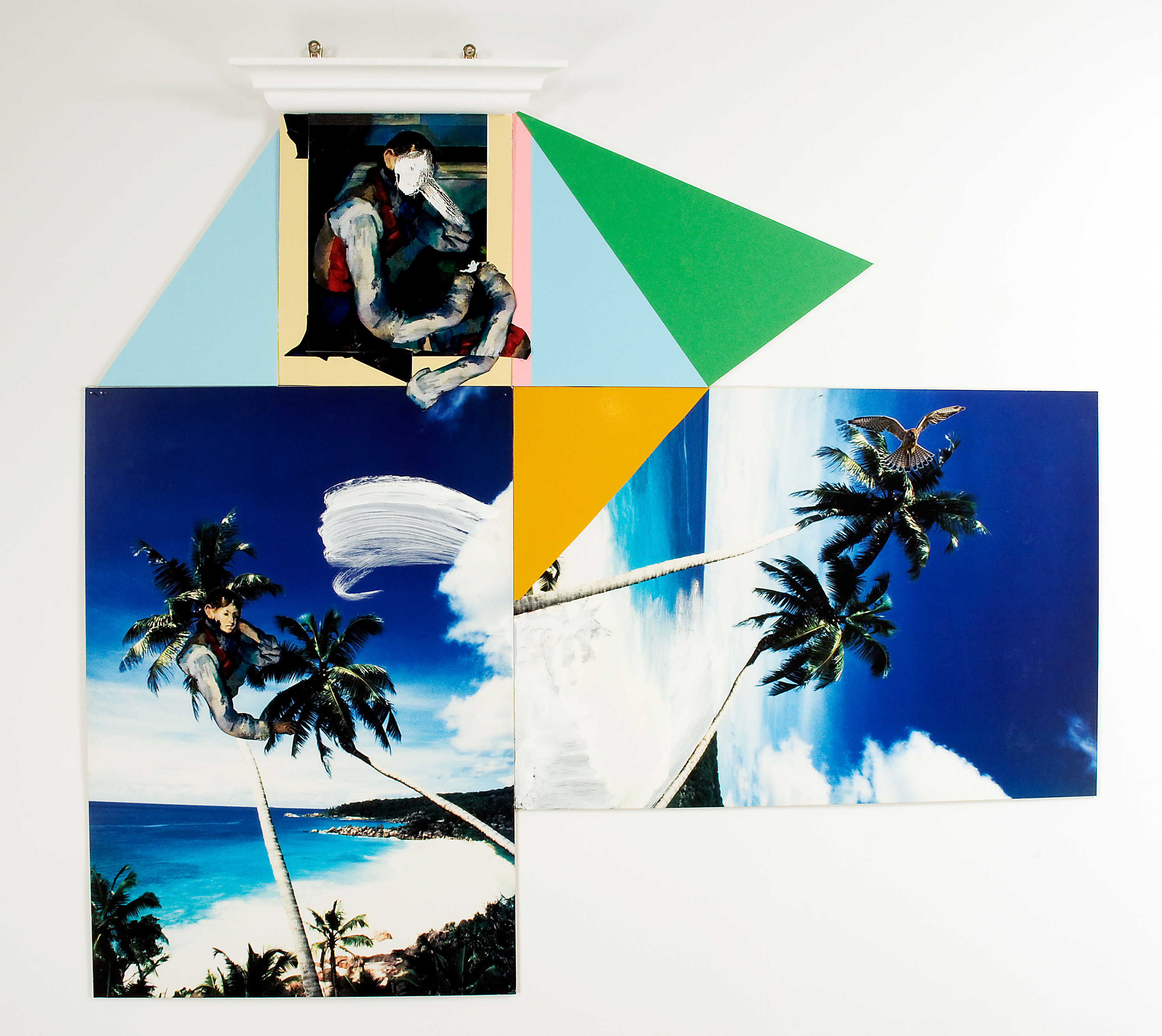He was born in Switzerland, raised partly Mexico, educated in Germany, designed an orphanage in China, and since September has been right here in Los Angeles.
For the past few months, Zurich-born artist Nic Hess has been working on his upcoming installation, an original work to be shown in the Hammer Museum this Saturday.
With previous exhibits in Germany, England, Italy and New York, Hess is known for his bright and bold wall paintings and sculpture that often utilize a variety of mediums and incorporate commercial logos and pop culture references.
Hess has brought his unique style to the walls and ceiling of the Hammer’s lobby, doing what he calls “activating every part” of the space by utilizing masking tape and the marble that already lines the Hammer’s interior. Hess spoke with the Daily Bruin’s Paige Parker about his experiences here and abroad and gave a few hints about what museumgoers can expect upon opening the main doors of the Hammer come Saturday.
Daily Bruin: You’ve moved around a lot. What was your upbringing like?
Nic Hess: We moved between Switzerland and Mexico in my childhood, and my father used to design shoes for Puma, and my mother was mostly at home. … I studied art in the Netherlands, in Germany, and the last 15 years I’ve been actually traveling around.
I spent a year in China (designing and supervising) an orphanage in ’97, and (will) go there again in the end of May. I’ve been back three or four times so far to visit them. … I spent a year in New York, got one grant, and I haven’t been in Los Angeles in 10 years. I moved here in September.
DB: What made you want to build the orphanage?
NH: After I finished studying in Holland, I knew that a year later I would have a grant somewhere, and then I was also kind of tired from studying and the art. And since I’m an architecture drawer, I met this woman in the orphanage, and then she asked me if I’d like going there and helping her build the orphanage. … It was really difficult; I didn’t speak the language. But that was probably the year of my life, because after nine months the children came in.
We went to find the children in the villages that (had) no parents, and it was very emotional.
DB: You use a lot of logos, like the “M&M” logo, and common signs in your art. What are you trying to say by re-using them like you do?
NH: I try to recontextualize those designs that we all know so well. I try to put them in another context and then make another play or something where every extra has to define itself again. … It’s a reflection, like a research, on those signs ““ signs that I like a lot.
DB: What is your work featured at the Hammer like?
NH: I’ve tried to really activate every part of the lobby. Once you see it, you’ll see what I’m talking about. Because I’m not touching only the two big walls, but I try to go on the ceiling and I go along, like where the guard is and the garage.
It’s kind of a linear drawing. It’s really going all over the walls (like) one big story actually. … There’s a lot of marble (in the Hammer), and the marble I always connect with some kind of bank lobby. … I just take what I find and play with it.
DB: How do hope viewers react to the work?
NH: I hope that maybe they will have a new view of the space, because there have been all these great subjects on those walls that I’m working now on, but I hope I can expand people’s fantasy, and I also hope I can … help them to see hidden spots of the Hammer.
And the whole thing is temporary, made almost all by tape and context papers, and it’s all very temporary. And I try to reflect on some issues or topics that are really (popular) now.
DB: Has traveling affected how your work has changed?
NH: (Traveling) is an important part of my life and also my work. … I’m not afraid to improvise, and so whichever institution I have worked for, it’s always, for me, a new challenge. … The traveling influenced my work, but also the work influenced my traveling. It’s like the egg and the chicken ““ I don’t know which was first. They complement each other.
DB: Do you have any advice for students studying art?
NH: There are so many different ways to be an artist. It’s definitely good if you listen to yourself (instead of) trying to please people. … Because if you do certain things because, say, you’re successful with (it) or people like something, and you start to do it not because you really need to do it or not because it’s something you want to express really, you’ll be troubled.
So I think it’s important to always really believe in what you’re doing, even though this is difficult. But always listen to your inner voice, and I think that’s a good path.
